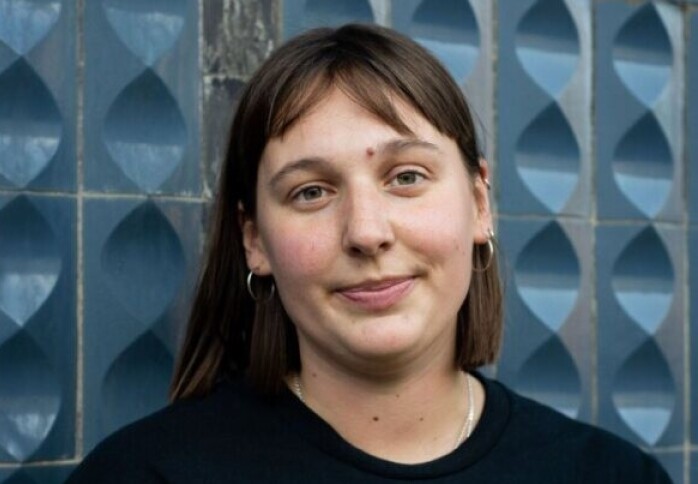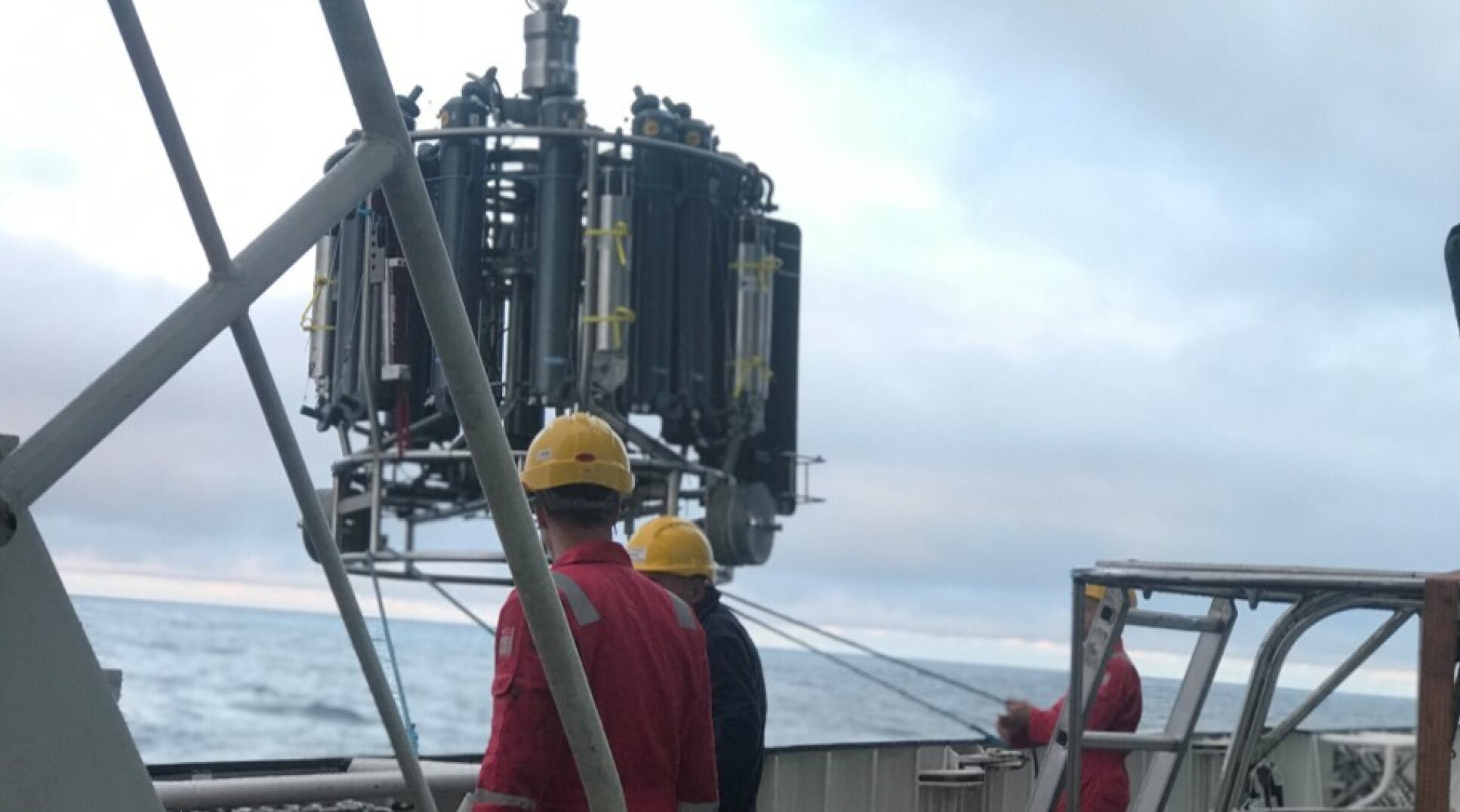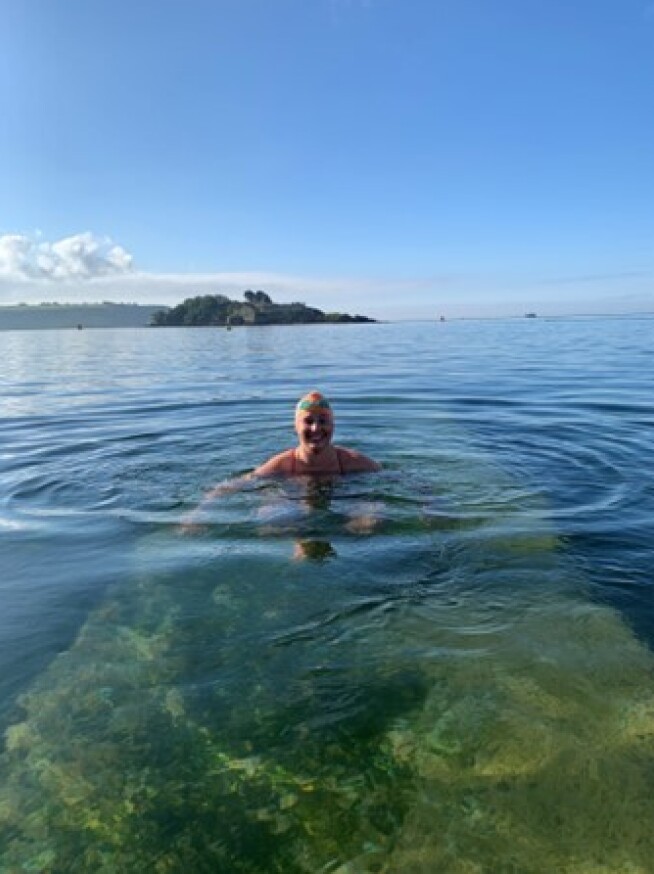
Photo credit: Dave Rowswell

We interviewed Dr Cordelia Roberts, who joined us in March as a Postdoctoral Research Associate in Dr Emma Cavan’s lab.
Can you tell me a little about your background?
I often feel like I wear many hats when describing my research background. I am a marine biologist, microbial ecologist, marine microbiologist, microbial oceanographer, biogeochemist, computational biologist and biological oceanographer. The crux of it being that I am interested in how microscopic bugs in our oceans determine the fate of carbon in our ocean. Most of my work to date has been looking at the diversity and activity of marine microbes which are either producing or interacting with detrital particles in the surface ocean and down to 1000 m, in a depth region of the ocean called the ‘Twilight Zone’. These bugs include microscopic algae, known as phytoplankton, and drifting animals known as zooplankton, as well as smaller microbes like bacteria, fungi and other single celled eukaryotes. I use a range of tools including seagoing fieldwork, laboratory experiments, molecular and biogeochemical analyses, alongside computational tools to determine the identity of microscopic organisms involved with cycling the carbon associated with particles.
Can you tell us a bit about your study prior to now?
I completed a Bachelor’s degree in Marine Biology and Oceanography at University of Plymouth with an Erasmus exchange year at Universität Bremen in 2017. I then completed a Masters of Research in Marine Biology specialising in marine molecular biology in 2019 and a NERC funded PhD in marine microbiology and biological oceanography in 2023, both in collaboration with the Marine Biological Association (MBA) and University of Plymouth. I completed a short post-doc after my PhD at the MBA looking at the diversity of organic matter and their associated fungal communities in the coastal ocean.

What is your new role at Imperial?
I am joining Dr. Emma Cavan’s group as part of the NERC funded BIO-Carbon project PARTITRICS. I will be looking at how different particle types play a role in the rate of microbial respiration in the North Atlantic. Marine microbes convert organic carbon in particles to carbon dioxide (CO2) during respiration where it is either stored (sequestered) or lost to the atmosphere, meaning they play an important role in setting atmospheric concentrations of CO2. I will be taking part in a research cruise for 6 weeks to the North Atlantic to conduct fieldwork and experiments to understand how different particle types control microbial respiration in the surface ocean and Twilight Zone.
What motivated you to work in this area?
In my undergraduate degree I was really captivated by the biological carbon pump and particularly by environmentalist Rachel Carson’s description of the major star of the biological carbon pump, marine snow, in her book The Sea Around Us. Carson describes the flux of organic carbon from the surface to deep sea so poetically ‘When I think of the floor of the deep sea ... I see always the steady, unremitting, downward drift of materials from above, flake upon flake, layer upon layer - the most stupendous 'snowfall' the earth has ever seen ...’ In reality it’s a lot of dead or dying, goop and poop, which isn’t quite as magical in reality, but nonetheless exceptionally important in the ocean’s role in storing carbon. I’m a big fan of the unsung heroes in the marine environment, and so naturally, anything that can fit in a teaspoon of seawater is very much more my bag than whales and dolphins! I have always had a real interest in Antarctica and the surrounding Southern Ocean since it is especially important in setting nutrient concentrations for the global ocean. There are many known unknowns, and many more still unknowns within the biological fate of carbon in our ocean, so plenty of things to explore and questions to ask which definitely motivates me now!

What attracted you to working in Life Sciences at Imperial?
Dr Emma Cavan has been doing some really fantastic work over the last few years which I was following closely throughout my academic career to date, especially on the importance of faecal pellets in carbon export.
I was really keen to work with Emma to learn from her and combine our interests and skillsets to get some really cool science done on how microbes interact with particles in the open ocean. Imperial College as an institution has a world-renowned reputation for its research, and it feels very exciting to be part of the Life Sciences community, especially at Silwood where I am based.
Tell us an interesting/unusual fact about yourself.
In 2021 I swam every day in cold open water in the UK!
Article text (excluding photos or graphics) © Imperial College London.
Photos and graphics subject to third party copyright used with permission or © Imperial College London.
Reporter
Emily Govan
Department of Life Sciences



